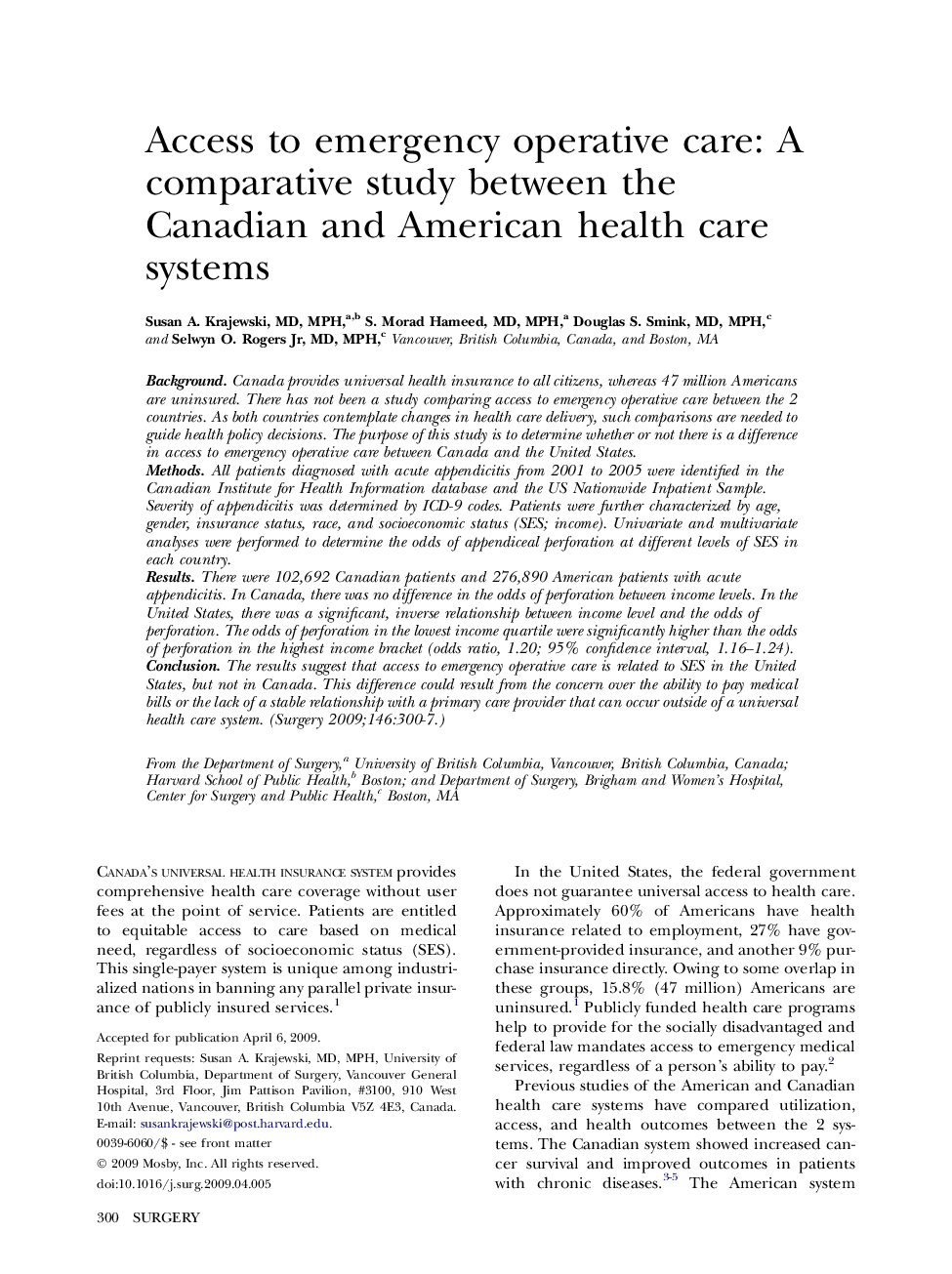| Article ID | Journal | Published Year | Pages | File Type |
|---|---|---|---|---|
| 4309397 | Surgery | 2009 | 8 Pages |
BackgroundCanada provides universal health insurance to all citizens, whereas 47 million Americans are uninsured. There has not been a study comparing access to emergency operative care between the 2 countries. As both countries contemplate changes in health care delivery, such comparisons are needed to guide health policy decisions. The purpose of this study is to determine whether or not there is a difference in access to emergency operative care between Canada and the United States.MethodsAll patients diagnosed with acute appendicitis from 2001 to 2005 were identified in the Canadian Institute for Health Information database and the US Nationwide Inpatient Sample. Severity of appendicitis was determined by ICD-9 codes. Patients were further characterized by age, gender, insurance status, race, and socioeconomic status (SES; income). Univariate and multivariate analyses were performed to determine the odds of appendiceal perforation at different levels of SES in each country.ResultsThere were 102,692 Canadian patients and 276,890 American patients with acute appendicitis. In Canada, there was no difference in the odds of perforation between income levels. In the United States, there was a significant, inverse relationship between income level and the odds of perforation. The odds of perforation in the lowest income quartile were significantly higher than the odds of perforation in the highest income bracket (odds ratio, 1.20; 95% confidence interval, 1.16–1.24).ConclusionThe results suggest that access to emergency operative care is related to SES in the United States, but not in Canada. This difference could result from the concern over the ability to pay medical bills or the lack of a stable relationship with a primary care provider that can occur outside of a universal health care system.
